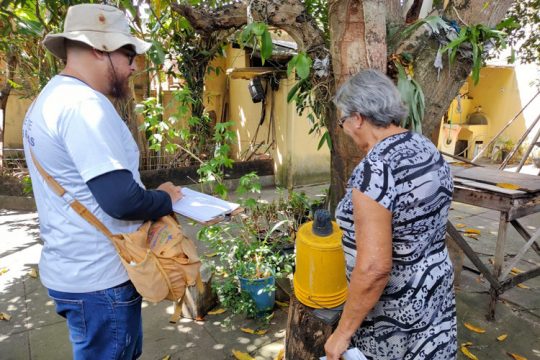The monitoring updates disease data in 92 municipalities in Rio de Janeiro and includes analysis of trends in the number of cases

Starting this week, the Government of Rio de Janeiro, through the State Department of Health (SES-RJ), will publish a weekly bulletin on the epidemiological situation of dengue in the nine regions of Rio de Janeiro. The analysis, prepared by technicians from the Strategic Information Center for Health Surveillance, which forms the Health Intelligence Center SES-RJ (CIEVS/CIS-RJ), shows a tendency to increase the number of disease cases, which is already significantly higher than expected at the moment. The model estimates twice as many cases that should already be in the notification system, but still do not appear due to notification delays.
“With the identification of the fourth type and the possibility of the emergence of the third type, we are becoming more vigilant towards possible epidemics. We are continuing our activity with 92 municipalities, so that even if the scenario worsens, the responses are firm and quick, minimizing the effects on the population,” says the Secretary of State for Health, Claudia Melo. “Mainly to avoid deaths.”
According to the bulletin, updated on Tuesday (12/12), the greatest delay in notifications was observed in the First Metropolitan Area, where Mesquita, Nova Iguaçu, Itaguaí and Rio de Janeiro were the municipalities with the highest number of cases of the disease. Time of year.
“These municipalities show a trend of rapid growth and delays in registration in the system,” explains Claudia Melo.
As of Monday (11), Rio state recorded 43,205 cases of the disease, with 2,481 hospitalizations and 26 deaths. More information at: monitor.saude.rj.gov.br.
See analysis by region
• The coastal region is witnessing a delay in notification and a stabilization, at a high level, in the number of cases. The municipalities of Rio das Ostras and São Pedro da Aldea have a pattern of much higher case numbers than expected throughout the year and in the current period. Rio das Ostras is experiencing significant delays in notification, with an increasing trend.
• Ilha Grande Baie (BIG) has no notification delay. The towns of Angra dos Reis and Mangaratiba have standards different from what would be expected for this time of year.
• Central South also experiences significant delays in notification, with an increasing trend, with Tres Ríos having the highest number of late cases.
• Médio Paraíba has no notification delay. Resende only shows an increasing trend in cases.
• Metropolitan II draws attention not to show an increase in dengue cases in 2023.
• The mountainous, northern and northwestern regions do not show an increasing trend or non-standard municipalities, with the exception of Santo Antônio de Padua (Northwest), which shows an increasing trend, according to the notification delay model.
Source: Royal Jordanian Government

